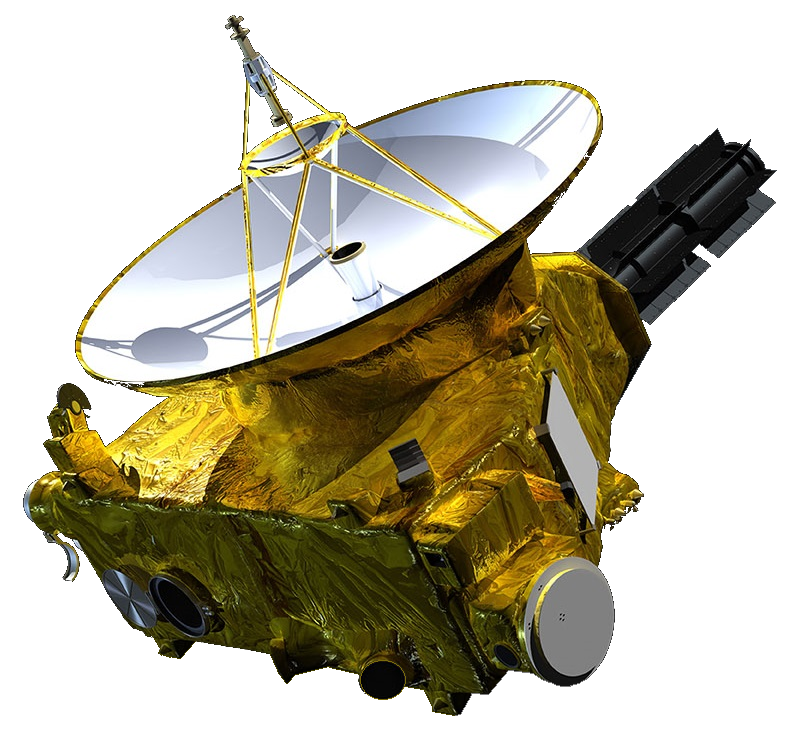New Horizons 2 on:
[Wikipedia]
[Google]
[Amazon]
 ''New Horizons 2'' (also ''New Horizons II'', NHII, or NH2) was a proposed mission to the
''New Horizons 2'' (also ''New Horizons II'', NHII, or NH2) was a proposed mission to the
/ref> There was a lot of flexibility: even without a gravity assist any KBO within 50 AU and a 20-year flight time was possible. A flyby of Neptune's
''New Horizons 2'' Report
{{Uranus *2 Missions to minor planets New Frontiers program proposals
 ''New Horizons 2'' (also ''New Horizons II'', NHII, or NH2) was a proposed mission to the
''New Horizons 2'' (also ''New Horizons II'', NHII, or NH2) was a proposed mission to the trans-Neptunian object
A trans-Neptunian object (TNO), also written transneptunian object, is any minor planet in the Solar System that orbits the Sun at a greater average distance than Neptune, which has a semi-major axis of 30.1 astronomical units (au).
Typically ...
s by NASA
The National Aeronautics and Space Administration (NASA ) is an independent agency of the US federal government responsible for the civil space program, aeronautics research, and space research.
NASA was established in 1958, succeedin ...
. It was conceived as a planetary flyby
A planetary flyby is the act of sending a space probe past a planet or a dwarf planet close enough to record scientific data. This is a subset of the overall concept of a flyby in spaceflight.
The first flyby of another planet with a functioni ...
mission in 2002, based on the ''New Horizons
''New Horizons'' is an interplanetary space probe that was launched as a part of NASA's New Frontiers program. Engineered by the Johns Hopkins University Applied Physics Laboratory (APL) and the Southwest Research Institute (SwRI), with a ...
'' spacecraft, which was in development at the time. In March 2005, the proposal was not selected for further development because of a shortage of plutonium-238
Plutonium-238 (238Pu or Pu-238) is a fissile, radioactive isotope of plutonium that has a half-life of 87.7 years.
Plutonium-238 is a very powerful alpha emitter; as alpha particles are easily blocked, this makes the plutonium-238 isotope suit ...
needed for the radioisotope thermoelectric generator
A radioisotope thermoelectric generator (RTG, RITEG), sometimes referred to as a radioisotope power system (RPS), is a type of nuclear battery that uses an array of thermocouples to convert the heat released by the decay of a suitable radioa ...
(RTG). The ''New Horizons 2'' study was funded out of the New Frontiers program
The New Frontiers program is a series of space exploration missions being conducted by NASA with the purpose of furthering the understanding of the Solar System. The program selects medium-class missions which can provide high science returns.
...
, and was delivered to the U.S. Congress in June 2005.
Description
''New Horizons 2'' was included in the tentative budget for theNew Frontiers program
The New Frontiers program is a series of space exploration missions being conducted by NASA with the purpose of furthering the understanding of the Solar System. The program selects medium-class missions which can provide high science returns.
...
missions. In 2004 the United States Senate Appropriations Committee provided additional funding for ''New Horizons 2'', a new Kuiper belt
The Kuiper belt () is a circumstellar disc in the outer Solar System, extending from the orbit of Neptune at 30 astronomical units (AU) to approximately 50 AU from the Sun. It is similar to the asteroid belt, but is far larger—20 tim ...
mission. As early as 2004 there was a conference on how to make the most use of ''New Horizons 2'' Uranus flyby.
Candidate targets included 47171 Lempo, a system that, like Pluto–Charon, contains multiple bodies. The mission plan for Lempo also included flybys of Jupiter and Uranus, and perhaps four Kuiper belt objects (KBO).parent/ref> There was a lot of flexibility: even without a gravity assist any KBO within 50 AU and a 20-year flight time was possible. A flyby of Neptune's
Triton
Triton commonly refers to:
* Triton (mythology), a Greek god
* Triton (moon), a satellite of Neptune
Triton may also refer to:
Biology
* Triton cockatoo, a parrot
* Triton (gastropod), a group of sea snails
* ''Triton'', a synonym of ''Triturus'' ...
was also considered, with 66652 Borasisi
66652 Borasisi, or as a binary (66652) Borasisi-Pabu, is a binary classical Kuiper belt object. It was discovered in September 1999 by Chad Trujillo, Jane X. Luu and David C. Jewitt and identified as a binary in 2003 by K. Noll and colleagues us ...
as a potential follow on. was also considered to be visited, having a similar orbit as Lempo.
See also
*Innovative Interstellar Explorer
Innovative Interstellar Explorer was a NASA "Vision Mission" study funded by NASA following a proposal under NRA-03-OSS-01 on 11 September 2003. This study focused on measuring the interstellar medium, the region outside the influence of the ...
(2003 concept study for RTG powered ion-engined probe to 200 AU by 2030)
* List of ''New Horizons'' topics
References
External links
*''New Horizons 2'' Report
{{Uranus *2 Missions to minor planets New Frontiers program proposals